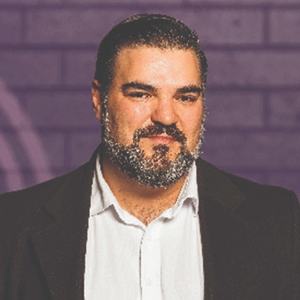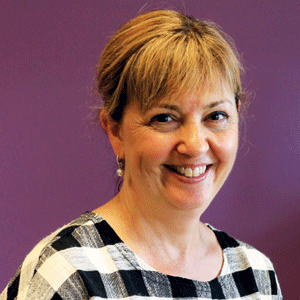THANK YOU FOR SUBSCRIBING

5 things Education Leaders expect from EdTech Companies in the Introductory Meeting
Christopher W. Harris, Executive Dean, Schools & Senior Director, Industry Engagement, Kaplan Singapore


Christopher W. Harris, Executive Dean, Schools & Senior Director, Industry Engagement, Kaplan Singapore
Founded in 2003 Kaplan Singapore has grown to become one of the most renowned private institutions in Southeast Asia, serving over 30, 000 learners from more than 30 countries worldwide. Since its founding in 1938 the larger Kaplan group had educated the many and currently serves over a million students worldwide.
In the conference of his founding EdTechX Asia 2016, Charles McIntryre recently lamented the sluggish uptake of edtech in places of learning when compared to its cousins in other industries like Fintech and e-health and attributed this slow adoption in part to the drivers for change in Edtech’s case being techies rather than the educator end-users. As an educator whose bias holds that educational technology at its best is as an enabler and an amplifier of good institutional leadership, general management and teaching and learning practices, I thought I might help explain a perspective from the other side of the desk in order to help readers who are in the space make a more impactful approach to client institutions.
Understand for which part of the educational journey your edtech is needed
Education is complex but institutions are generally organized around a fairly universal student journey so ensure you know whether the solution required relates to marketing and recruitment; admissions; student fees and finance; teaching, learning, curriculum and assessment; campus life; graduation or alumni relations. On top, solutions around transnational aspirations are increasingly important.
Case: when looking for a ‘future classroom’ solution I was constantly frustrated by tech companies trying to move my focus to sales and marketing solutions which suited their ends and metrics, rather than working around our needs and being willing to change their measurements. I understand quarterly reporting but for companies operating here in Asia (and in B2B generally) there needs to be much more thought given to playing the relational long game.
Device Agnosticism is the New Black
Packaging hardware and software is a bit passé and you will need to be solution-focused as hardware is decreasingly a Cap Ex decision and increasingly a choice of your own adventure -only somewhat curtailed in full freedom by doubts over the security of Smart and wearable devices, which are slowly dissipating with improvements like those to Android.
Case: when looking for a curriculum/IP solution, I was impressed by one hardware provider who nimbly moved from hard-selling their devices to selling their downstream vendor’s software solution for managing curriculum/IP. In doing so, they missed the sale but built a trust which resulted in much more business downstream.
Invest in an Educator on Your Team
To understand Mr. McIntyre’s insights that begin this article, consider the proposition that Fintech and e-Health by comparison have flourished because Finance and Health professionals have been part of the drive from the outset. I’m still surprised by the lack of educators in tech teams pitching in this space.
Case: A large MNC company brought along a former Academic who knew enough of their product line and more than enough about learning and teaching to be able to work with our institution at joining the gaps.
If Idea 3 is not an option, train one yourself
Tech companies could help employees so inclined cross-train in education and training to develop these dual capabilities of IT Tech and educational knowledge so rarely found in one person.
Case: In fact, this is a universal gap on both sides of the divide. Recently, however, one of my finance lecturers who showed great tech savvy and intuition has just filled a big gap in my team and morphed into an eLearn architect (read curriculum designer and developer in one) after formal and informal learning of HTML and other programming. This is a huge advantage because she knows what works in a traditional ‘class’ and how to adapt or translate it for online.
Pedagogy is Not Trendy Footwear for Hipsters but Get into it Nonetheless
When I started leading teams to ‘blend’ what were traditional face-to-face only courses in 2008 with online to create a part face-to-face, part online course, it was very difficult to make a case that the online courseware was a worthy alternative to that which the face-to-face lecturer could facilitate inside the 4 classroom walls. Now, with interactive video, Gamification, AR, MR and VR to name but a few possibilities, online learning done well can be thought of as equivalent and, perhaps, better in some instances. Readers would know this, but the problem is that those who make decisions about curriculum and courseware may resemble tech-dunces like me and need to be spoken to in their language, variously the languages of learning science, academia and pedagogy. Get this into the lexicon of your teams. It will make the decision maker less sensitive to their own tech knowledge gaps and build a communication bridge.
Case: When on previously mentioned case to build a ‘future classroom’, we call the Synergy Pod at Kaplan Singapore, we were stuck on how we would use a Tablet in the room. The tech company vendor was a former IT lecturer and picked up on the goal we had to build a ‘collaborative learning space’. Rather than hard-selling tabs to each student seat he suggested only one tablet per team of 6 students so that our overall pedagogical goal of students solving problems together was the focus.












